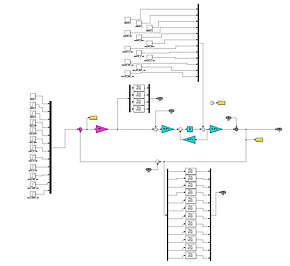RESUME
Professional
info
I am a machine learning scientist with research interests in online learning, nonlinear optimization, and their control applications. I love writing things out on the whiteboard, using hands to derive interesting and useful theoretical results, and verifying them by simulation.
Skills
Education
University of Minnesota, Twin Cities, US
Department of Electrical and Computer Engineering
PhD candidate, GPA: 4/4,
Minor: computer science
Fall 2015 - Fall 2019
Advisor: Prof. Andy Lamperski
Research projects:
-
Online convex optimization and its application to system identification.
-
Designing randomized efficient algorithm to solve Semi-definite programming problem.
-
Online regularized Actor Critic in solving model-free based controller/actuator selection.
Tianjin University, China
School of Electrical Engineering & Automation
Bachelor of Engineering, GPA: 3.9/4, Rank: 1/154
Sep. 2009 - June 2013
Python
C++
Tensorflow
R
Photoshop/Lightroom
Selected courses
Artificial Intelligence
Machine Learning
Robust Control
Convex Optimization
Optimal Filtering and Estimation
Intelligent Robotic Systems
Design and Analysis of Algorithms
Honors
Work
experience
Machine learning scientist at Expedia Group
Seattle, WA
Jan. 2020 - now
Apply machine learning methods such as online convex optimization, Actor-Critic algorithm, tree algorithm, and neural network to improve kpis in online ranking problems as well as bidding of search engine market.
Intern at 3M
St. Paul, MN
May 2018 - Aug. 2018
Project: Deep Learning-based time series data classification
-
Generated synthetic power network data by Matlab/Simulink with actual power consumptions.
-
Preprocessed the data and reformulate the power network anomaly detection and localization problem as a time series data classification problem.
-
Applied deep learning tools including CNN and LSTM with different setups to extract both the spatial and temporal relations of the data under the tensorflow environment written by python.
-
Fine-tuned the hyper-parameters of the proposed deep learning algorithms to achieve more than 94% accuracy with only 20% of the sensors.
Intern at Boston Scientific
Arden Hills, MN
May 2017 - Aug. 2017
Project 1: Data analysis on the demographic data from the Heart Failure patients
-
Applied hierarchical clustering algorithm to obtain different sub-groups, whose variables were grouped and extracted by leading eigenvectors, and the clustering was evaluated by B_k statistic and Cubic Clustering criterion.
-
Carried on the significance analysis for every variable among different groups. Related each sub-group’s heart failure event rate and different sensor signals with the group’s characteristic description to investigate the influence of the demographic data.
Project 2: Adaptive hyper-parameter optimization by reinforcement learning
-
Designed the reward function based on the performance of the HeartLogic device.
-
Applied the multi-armed bandit algorithm to automatically tune the hyper-parameter in HeartLogic device based on the information the patients/doctors provide with retrospectively.
Travel awards: AAAI 2020, ICML 2019, NeurIPS 2018
2018 MnDRIVE PhD Fellowship
2015 UMN ECE Department Fellowship
National Scholarship: 2012, 2011, 2010
Review service
IEEE Transactions on Neural Networks and Learning Systems
IEEE Conference on Decision and Control 2020
NeurIPS 2020
IEEE Transactions on Signal Processing
Favorite Course
Projects
SLAM: Simultaneous Localization And Mapping
Course: Sensing and Estimation in Robotics, Spring 2018
Used the Pioneer robot with the Laser sensor and the robot wheel encoder to estimate the pose of the robot and build 2D hallway map simultaneously.
-
Applied RANSAC algorithm to do line extraction and segmentation from the laser data samples.
-
Applied three criteria including line orientation difference, line distance, and overlapping rate to do the line matching in order to relate the new measurements to the estimated results.
-
Applied EKF (extended kalman filter) algorithm to simultaneously update both the robot pose and parameters associated with lines.
-
All the algorithms were first designed in Matlab to do the verification and transformed to C++.
Robust Control Analysis of the LQR state feedback control to Quadrotor
Course: Robust Control System Design, Spring 2016
Control algorithm design and robustness analysis on the quadrotor’s model.
-
Applied LQR state feedback control algorithm to control the quadrotor’s position, speed, altitude, and angular velocity based on its approximated linear state space model.
-
Did robust control analysis to the controlled quadrotor’s position and yaw angle to make sure our LQR control law can make quadrotor control with the uncertainties including the plant input’s uncertainty, the plant’s neglected high-order dynamics, and the feedback’s uncertainty.
-
Analyzed the robust stability in terms of breaking-one-loop-at-a-time and the estimated multiplicative transfer functions.


